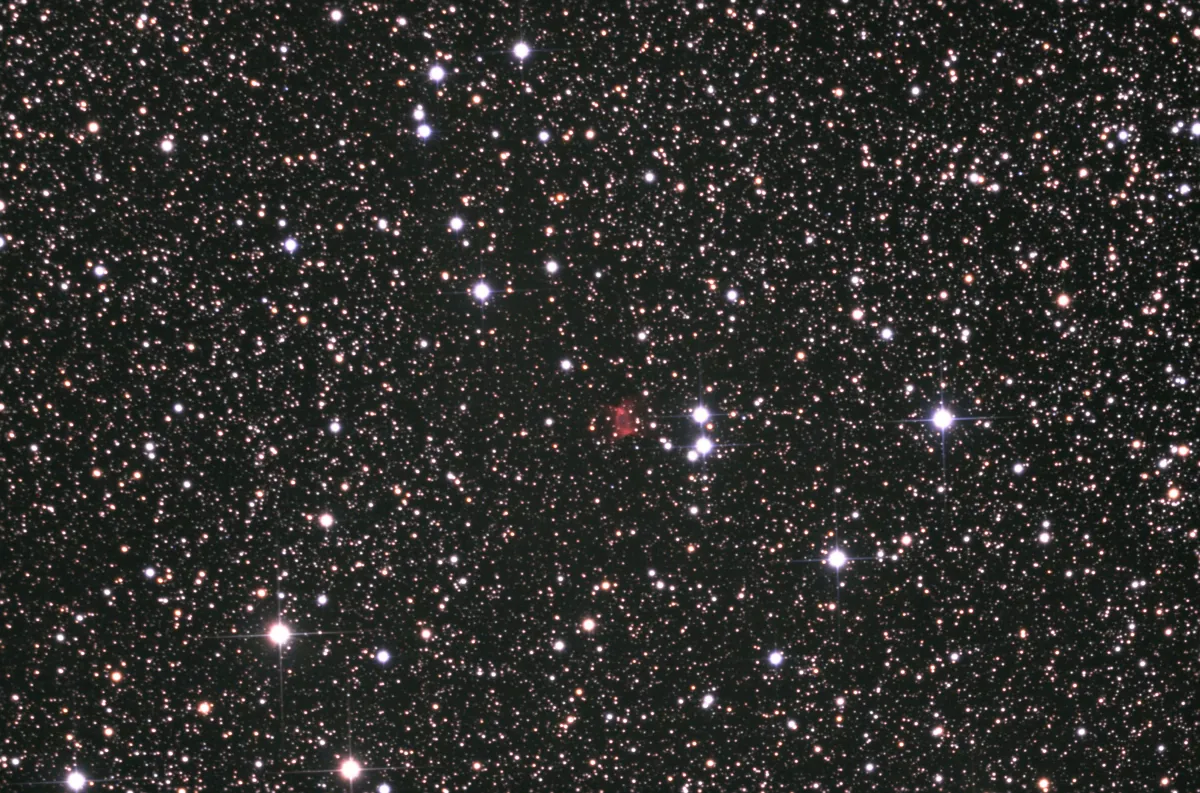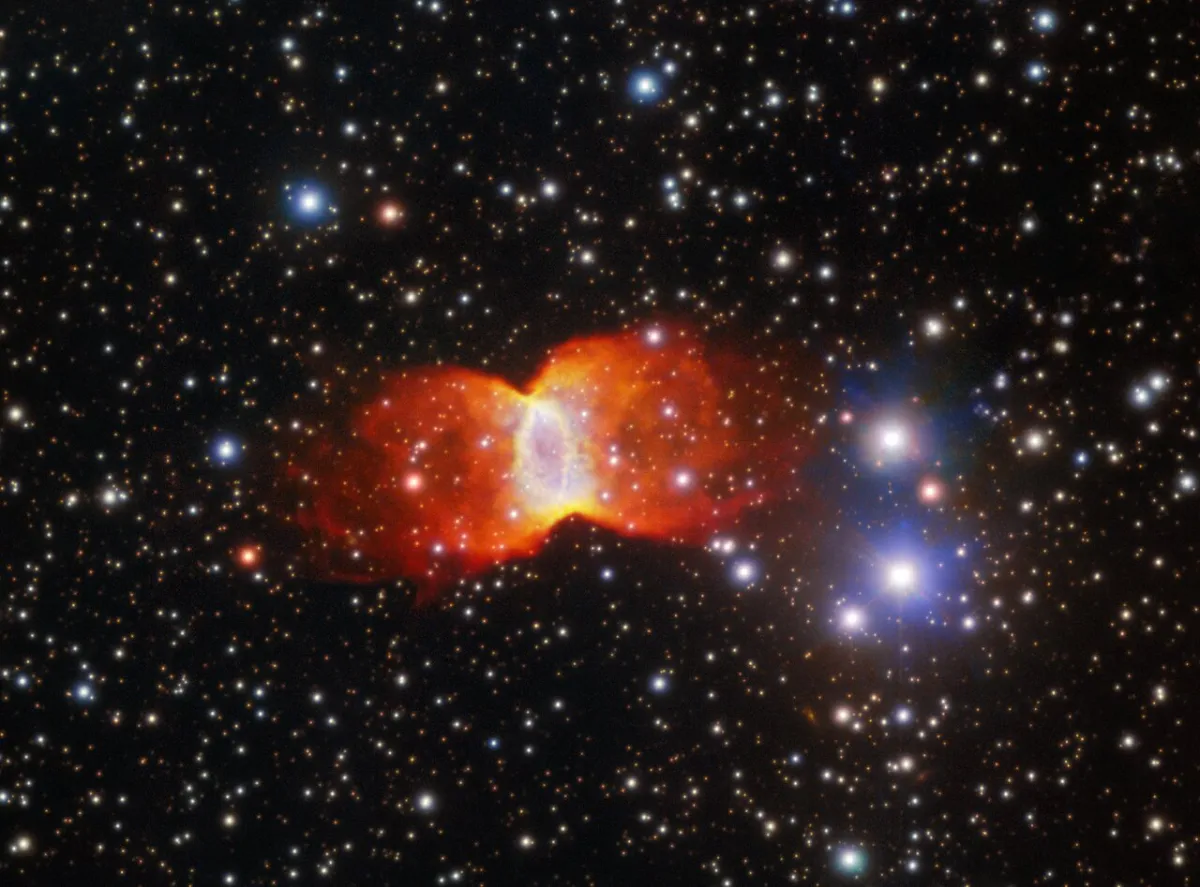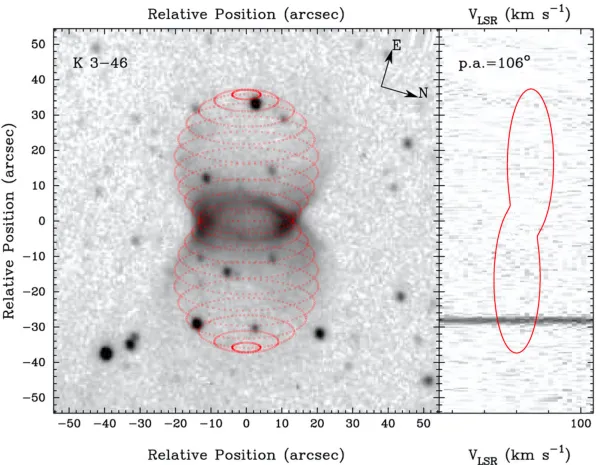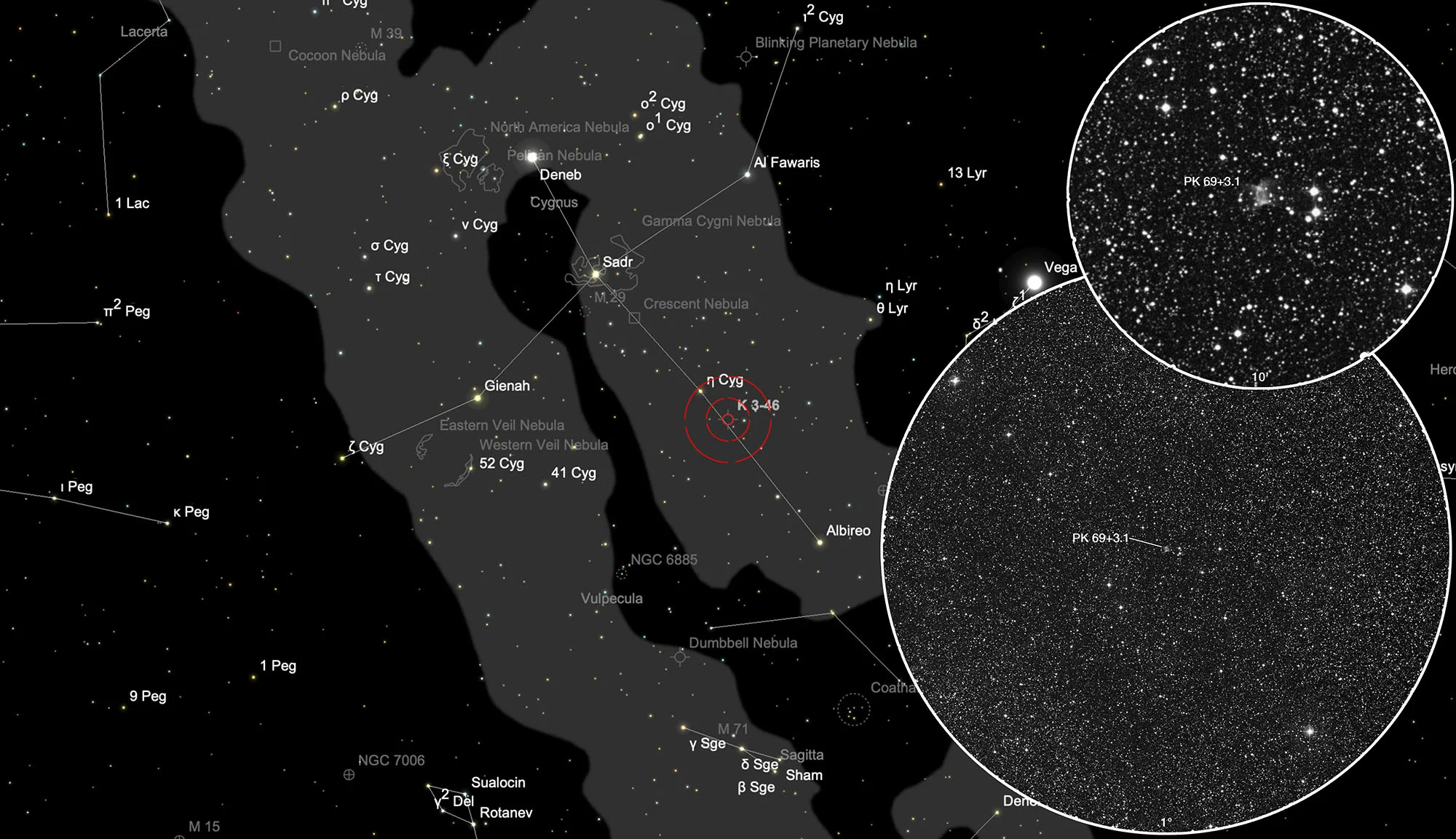Planetary Nebula Kohoutek 3-46


History
The planetary nebula Kohoutek 3-46 (K 3-46, PK 69+3.1) was discovered in 1972 by the Czechoslovak astronomer Luboš Kohoutek during his Hα Schmidt-Camera survey for faint planetary nebulae at Hamburg Observatory. [748]

Physical Properties
The PN has a well-defined hourglass shape with a prominent equatorial ring and marked waist. The expansion rate is very slow. In the equatorial plane it is less than 3 km/s and in the polar direction about 18 km/s. The age is estimated to be around 20'000 years and the distance to be 2.2 kpc (around 7200 light years). [338]
| Designations | PN G069.2+03.8: K 3-46, PK 69+03.1, ARO 334 |
| Right Ascension (J2000.0) | 19h 50m 00s |
| Declination (J2000.0) | +33° 45' 55" |
| Dimensions | 23." (optical) |
| Discoverer | KOHOUTEK 1964 |
Finder Chart
The planetary nebula Kohoutek 3-46 (PK 69+3.1) is located in the constellation Cygnus. The best time to observe is March to December, when it is highest at night.
